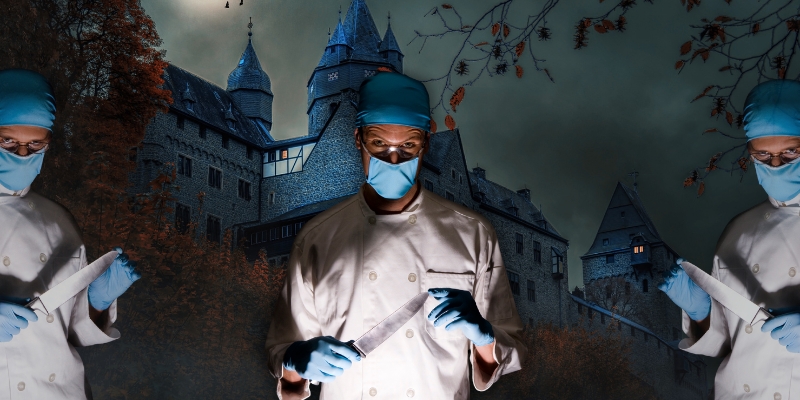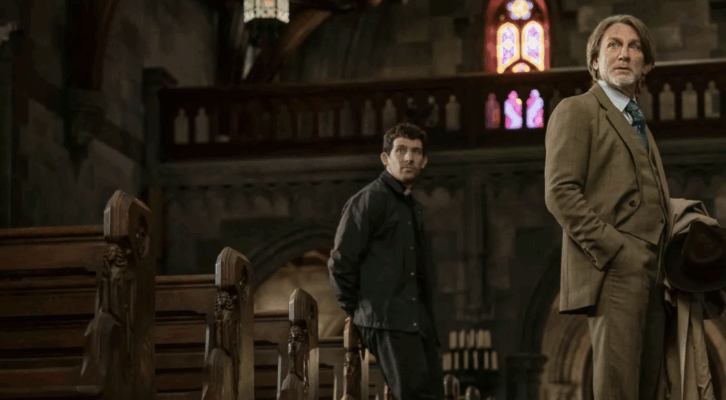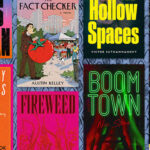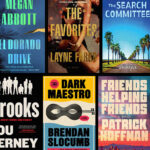Gothic historical novels are known for their themes of isolation, the paranormal, a creeping sense of dread, and, of course, death. But there’s another trope many writers of gothic tales have woven into their stories: the subject of medicine. Stories of illness and survival can be found in virtually any subgenre, but through a gothic lens these tales take on a much darker aspect.
Strange ailments, macabre modes of care, and grisly corpses abound. Add to these elements of the unexplained, the hidden, and the lost and you’ve got a recipe for a compelling read.
In my latest book, Needle and Bone, my protagonist is an artist who goes to work at a medical school in mid-nineteenth century Philadelphia. Under the employ of Dr. Thomas Mütter, Annis learns quickly that her work at the school, and the doctor’s patients she draws, are unusual to say the least.
Dr. Mütter is a surgeon who works on so-called “monsters”—people with birth defects and disfigurements so extraordinary, most are unable to lead normal lives. Surrounded by rare medical specimens and the bodies of the physically and spiritually broken, Annis works to hide her own secrets as she builds a new life—until the ghost of a girl she saw murdered begins to haunt her and the man who killed her is hot on Annis’ trail.
In medically themed gothics, scientific advancement is often juxtaposed with questions of what it means to be human, to be alive. This common thread is apparent in classics like Frankenstein, The Strange Case of Dr. Jekyll and Mr. Hyde, and The Island of Dr. Moreau—novels in which scientific experimentation has gone awry. The ethical dilemmas that arise from such tales—both old and new—deliver the chills and thrills readers of gothic expect and clamor for.
Following is a list of eight novels with medical themes at their core with gothic twists you’d expect from a subgenre steeped in the creepy.
*

A. Rae Dunlap, The Resurrectionist: A Twisty Gothic Mystery of Dark Scottish History
Dunlap’s debut tells the story of James Willoughby, a young student with dreams of becoming a surgeon in 1828 Edinburgh, Scotland. To succeed in his studies, he needs the all-important human cadaver.
When Willoughby makes a deal to score a body with the help of a dissectionist at the school, the two come face to face with the infamous Burke and Hare—Edinburgh’s most notorious body snatchers.
This is the era of the aptly named Resurrection Men, unscrupulous gangs who dig up bodies for medical schools for big profits. Soon Willoughby is swept up in a sinister scheme that may cost him his life.

Susan Stokes-Chapman, The Shadow Key
When Dr. Henry Talbot accepts a position on an isolated estate in Wales and discovers his predecessor died under strange circumstances, he sets his mind to uncovering the truth. Unfortunately, getting to the truth isn’t so easy: the superstitious villagers treat him with distain, the lady of the house stays mysteriously locked in her room, and her daughter, Linette, is headstrong and difficult.
This atmospheric mystery pits scientific reason against the supernatural and is steeped in pagan cults and Welsh folklore.

Johanna van Veen, Blood on Her Tongue
When Sarah is diagnosed with temporary insanity, her twin sister Lucy becomes obsessed with finding the cause. What’s at the root of Sarah’s lack of appetite and her brain fever?
There’s also her strange fixation with an ancient corpse found in a bog near the property. Lucy will do everything she can to help Sarah, but as her sister’s bizarre symptoms increase, so do the stakes to keep her alive.

Sharon Lynn Fisher, Grimm Curiosities
This haunting story is set in York in the 1880s. It follows antique shop proprietor Lizzy who’s concerned for her mother when she becomes unresponsive after speaking with ghosts. Intriguingly, a book in the shop might be the key to restoring her mother’s health. The plot thickens when Lizzy learns about another girl similarly stricken and a collector arrives who’s keen to purchase the book.
A Christmas ghost story with romantic elements steeped in myth and ancient folklore.

Noel O’Reilly, The Darlings of the Asylum
No gothic compilation is complete without at least one asylum story. With a beginning that reads, “To marry is madness. To escape is impossible” the reader is braced for a wild ride.
Once the heroine, Violet Pring, is committed to Hillwood Grange Lunatic Asylum for the crime of being headstrong, a harrowing tale of good versus evil, madness and sanity unfolds until the final shattering end.

Elizabeth Hutchinson Bernard, The Beauty Doctor
In this fast-paced thriller, plastic surgeon Dr. Rome performs surgery with the help of his young aide, Abigail, who desires to be a doctor herself. This one is the most modern on the list (1907), and touches on scientific ethics, class, and feminism.
A dark current throughout is Abigail’s increasing suspicion that the charming doctor she assists may not be all he appears to be.

Jennifer Cody Epstein, The Madwomen of Paris
This finalist for the Edgar Award is inspired by true events. After Josephine is committed to the Salpêtrière asylum in nineteenth century Paris, she becomes the patient of director Jean-Martin Charcot, an expert in hysteria. Under his thrall, Josephine is hypnotized and soon captures the attention of rapt audiences.
However, when Josephine’s memory returns, she begins to suspect she has committed a terrible crime. Will Laure, the asylum attendant who’s become close to her help her escape or should Josephine remain, having committed a horrific murder?

Bridget Collins, The Silence Factory
Arguably the most bizarre book on the list, The Silence Factory is a speculative tale with a wholly original premise. In it, Collins spins a tale of spider silk imbued with unusual powers.
When Dr. Henry arrives at Carthmute House to treat Philomel of her deafness, he uncovers a magic breed of spiders whose silk can both silence and amplify sound—yet neither is innocuous. As Henry’s mental state deteriorates, he discovers dark family secrets, corruption, and odd magic he can’t explain.
***


















